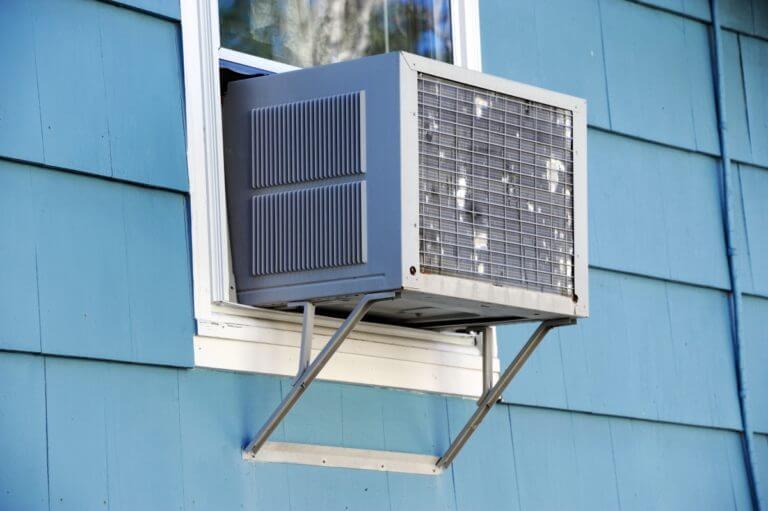What's the Right Type of AC for Your Home?
What's the Right Type of AC for Your Home?
As warmer weather approaches, many homeowners are considering air conditioning options. No matter what type of AC system you choose, you'll have to pump hot air from the inside of your home to the outside. This leaves you with two installation options: a window or a wall.
The two most common types of air conditioners are room air conditioners and central air conditioners. A compromise between the two is provided by ductless, mini-split air conditioners. Below, we break down the benefits of various AC options as outlined by energy.gov.
Central Air Conditioner
Central air conditioners are often the preferred type of AC system for homeowners. This forced air system circulates cool air through a system of supply and return ducts. These ducts are located in openings in the walls, floors, or ceilings (vents). The duct system carries cooled air from the air conditioner to the home. This cooled air becomes warmer as it circulates through the home; then it flows back to the central air conditioner through return ducts and registers.
Like central systems, mini splits have two main components: an outdoor compressor/condenser and an indoor air-handling unit. A tube or trough (conduit) links the outdoor and indoor units. This conduit houses the power cable, refrigerant tubing, suction tubing, and a condensate drain.
Many people assume that adding ductwork is expensive or even destructive. However, it's actually easier than you think! An experienced HVAC technician can hide ductwork behind walls, in the back of closets, and in the attic with minimal cuts into walls and the ceiling. Outdoor pipes can be disguised as part of your gutter system.
Benefits of Central Air Conditioners:
The same central air system can heat and cool the home in one user-friendly unit (some central air conditioners can operate in a reversed cycle to pump out hot air with a heat pump)
Indoor noise from a central AC system is barely detectable. The condenser, fan, and compressor are located in an outdoor unit, instead of in a nearby window.
Since the central air conditioner parts and components are located outside of the home, it does not affect the view from outside or within the home.
A central air system does not take up indoor space for a modern, updated look in your home.
Central air conditioners are easy to operate. The entire system is conveniently controlled by a simple thermostat that can be programmed to run at certain times and temperatures.
Air pushed through your ducts is filtered, which means fewer allergens and potentially harmful toxins. If you live in an area with high humidity, filtered air can lower moisture levels to increase home comfort and prevent mold growth.
Window Air Conditioners (Room Air Conditioners)
Room or window air conditioners cool rooms rather than an entire home. Since they provide cooling only where they're needed, room air conditioners are generally less expensive to operate than central units. This type of AC is the quickest solution — however, AC unit efficiency is generally lower than that of central air conditioners.
Many people make the mistake of buying an oversized AC window unit, hoping it will cool rooms quickly. However, this can cool a before proper dehumidification occurs, making the area feel uncomfortably damp. It can also put a lot of strain on your home's electrical system.
It's important to verify that your home's electrical system can withstand a window unit's power requirements. Room units operate on 115-volt or 230-volt circuits. The standard household receptacle is a connection for a 115-volt branch circuit, so room units rated at 230 volts may require a special circuit.
Benefits of Window Air Conditioners:
Can be used as additions to houses with non-duct heating systems.
Good for room additions and small apartments where installing additional ductwork is not feasible.
Installation is simple; does not require wall modification.
Units are portable.

Ductless Mini Split Systems
Like central systems, mini split-system air-conditioners (mini splits) have two main components: an outdoor compressor/condenser and an indoor air-handling unit. A conduit houses the power cable, refrigerant tubing, suction tubing, and a condensate drain, and links the outdoor and indoor units.
While mini split systems are the most flexible type of AC option, their primary disadvantage is cost. Systems can cost about $1,500 to $2,000 per ton of cooling capacity — more than 30% more than central systems (not including ductwork). They may cost twice as much as window units of similar capacity.
Benefits of Mini Split Systems:
A solution for room additions and small apartments where extending or installing distribution ductwork is not feasible.
More flexibility in interior design options, since indoor air handlers can be suspended from a ceiling, mounted flush into a drop ceiling, or hung on a wall.
Less obtrusive than a window air conditioner.
Evaluating Your AC Options
At the end of the day, a central AC system is almost your safest, most efficient home cooling option. Today's technology allows air conditioners to use 30% to 50% less energy to produce the same amount of cooling as air conditioners made in the mid-1970s. And if your AC system is less than 10 years old, you're saving 20% to 40% of your cooling energy costs. On top of that, today's programmable thermostats allow you to tailor your home temperature in a way that syncs up with your living schedule. Combine all that efficiency with increased air quality, and the benefits are hard to beat!
Even if your home can't support central AC ductwork, One Hour Heating & Air Conditioning® of Southeast Pennsylvania technicians are happy to work with you to deliver the best home cooling options. When it's time to beat the heat, just pick up the phone or schedule on online appointment. Comfort is on its way!
